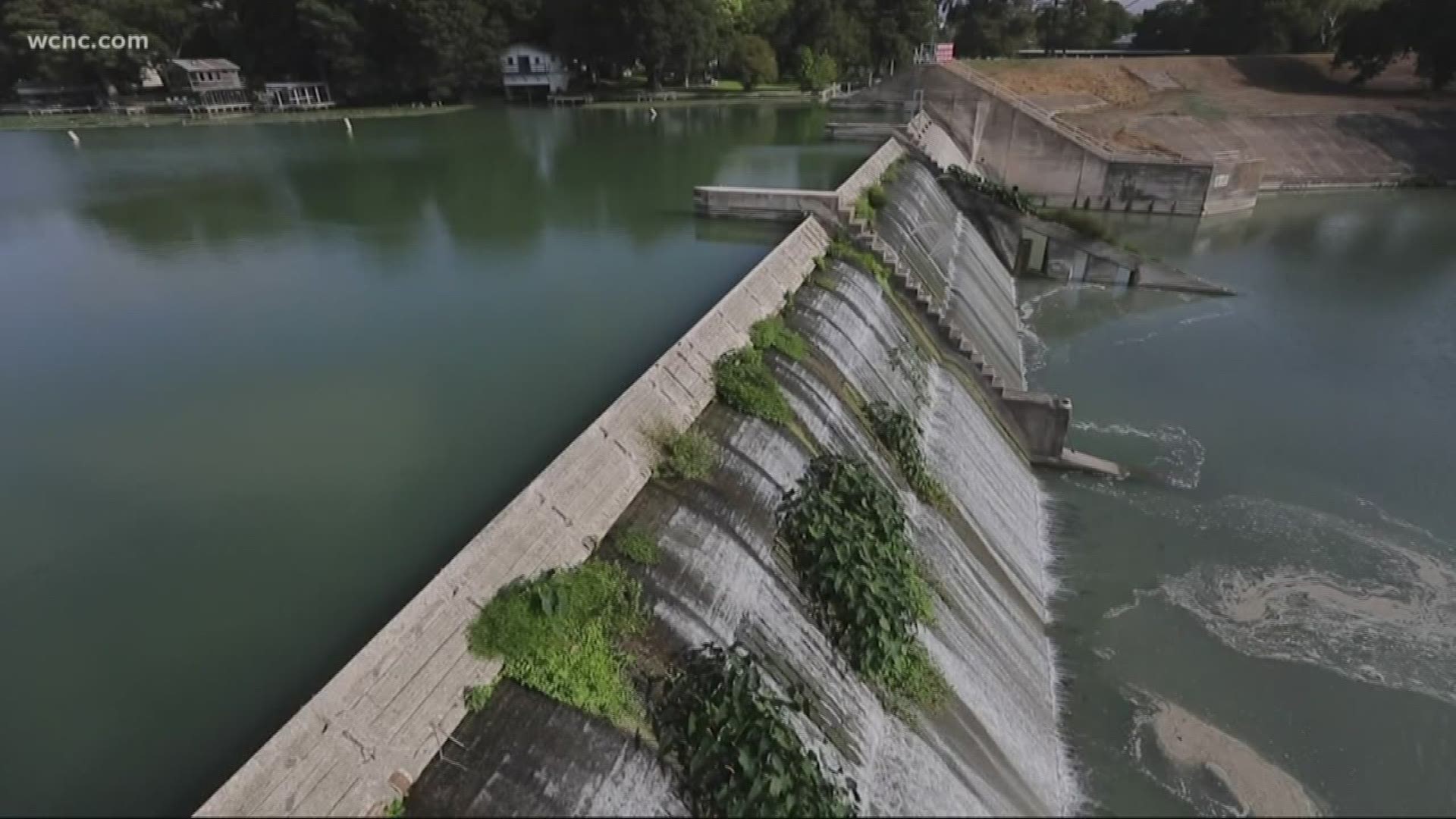RALEIGH, N.C. — (AP) — North Carolina carries a little-understood risk of flooding as climate change makes rainstorms more intense — the state has the country’s second-largest collection of dams in poor or unsatisfactory condition built in places where a failure could kill people.
An investigation by The Associated Press identified 168 high-hazard dams in poor or unsatisfactory condition in North Carolina. That trailed only Georgia among the 44 states and Puerto Rico that provided full information in response to the AP’s public records requests.
Nationally, the AP found at least 1,680 high hazard dams that are rated in poor or unsatisfactory condition.
High hazard means someone could die if the dam fails, but that could mean a risk to a single house or a community of thousands.
A National Climate Assessment released last year by the White House noted a growing frequency and intensity of storms as the climate changes. That can push some dams beyond what they were designed to handle.
A prime example occurred in North Carolina and South Carolina, where a series of extreme rainstorms over a 12-month period starting in October 2015 led to the failure of 83 state-regulated dams — some falling like dominoes.
In many cases, “they were designed to be only capable of dealing with floods of a given size. Mother Nature threw a flood that was much bigger,” said Martin McCann, director of Stanford University’s National Performance of Dams Program.
In some cases, it’s hard for the public to know the scope of danger from a dam. North Carolina officials have cited security concerns while declining to publicly release emergency action plans for some dams. The plans include steps to be taken if a dam is in danger of failing and show areas that could be flooded. Sometimes, dam owners just don’t file emergency action plans with the state.
The Al Beshears dam perched on a Wilkes County hill about 15 miles from North Wilkesboro is rated as having safety deficiencies that require immediate action. A February visit by state inspectors led North Carolina dam safety officials to conclude “the lake impoundment behind the dam needs to be drained immediately to prevent a possible failure of the dam.” Inspectors could see seeping water on the dam’s downstream slope, a potential sign of internal erosion that can lead to failure if it’s excessive. Inspections in 2015, 2014 and 2013 said the same.
Despite that, the dam’s owners hadn’t produced a crisis plan describing how a breech could affect others.
The dam’s neighbor and owner, Greg Jerome Beshears of Millers Creek, didn’t respond to a phone message from the AP seeking comment.
North Carolina has recently stepped up its oversight of dams. The state has increased its dams’ safety program budget by two-thirds, even as 13 other states are spending less on dam safety this year than in 2011. North Carolina has 20 full-time staff positions for a dam safety office that regulates more than 3,100 dams.
Many dams are privately owned, which can create challenges for state regulators seeking to enforce needed repairs.
Before Hurricane Matthew hit in 2016, state inspectors had provided deficiency notices six times for a dam that doubled as the only road to a Rayconda community of more than 200 homes in west Fayetteville. But members of the private homeowners’ association said in 2013 that they didn’t have the money for repairs and wanted to city to help pay for them, according to a Federal Emergency Management Agency report about dams that failed during Matthew.
The damaged dam was repaired sufficiently to support traffic after the hurricane, and a new road was built to avoid the dam. But the post-hurricane repair plans weren’t submitted for review by state experts, another deficiency notice early last year said. By that time, erosion already was “undermining the repairs made to the slope.”


